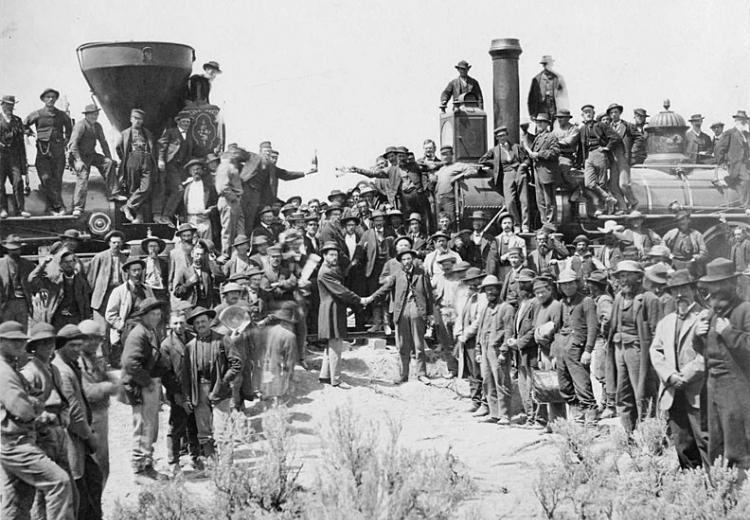The Impact of the Transcontinental Railroad

The ceremony for the driving of the golden spike at Promontory Summit, Utah on May 10, 1869; completion of the First Transcontinental Railroad. At center left, Samuel S. Montague, Central Pacific Railroad, shakes hands with Grenville M. Dodge, Union Pacific Railroad (center right).
By 1881, it was routine to travel by train from eastern cities like Boston, New York, Philadelphia, and Baltimore to San Francisco. The round trip that took Lewis and Clark two-and-a-half years in 1803 was now a nine-day journey. The consequences of this new technology were profound. Nothing in the West would ever be the same again.
Analyzing archival material such as photos, documents, and posters, students can truly appreciate the phenomenon of the Transcontinental Railroad. They can begin to answer some important questions: Why was the Transcontinental Railroad built? How did it affect Native Americans? Other minorities? How was the environment affected? What were the advantages of railroad travel? Who used the railroads, and why? Who built the railroad?
Help your class make connections between the arrival of the railroads and many of the changes occurring in the United States and its territories.
Guiding Questions
How did the Transcontinental Railroad change the U.S. economy?
How did the Transcontinental Railroad affect immigration, labor, and the environment?
Learning Objectives
Examine the short and long term effects of the Transcontinental Railroad on the regions through which it passed.
Analyze archival documents to illustrate the effect of the Transcontinental Railroad on the U.S.
Evaluate the competing perspectives on the construction of the railroad.
